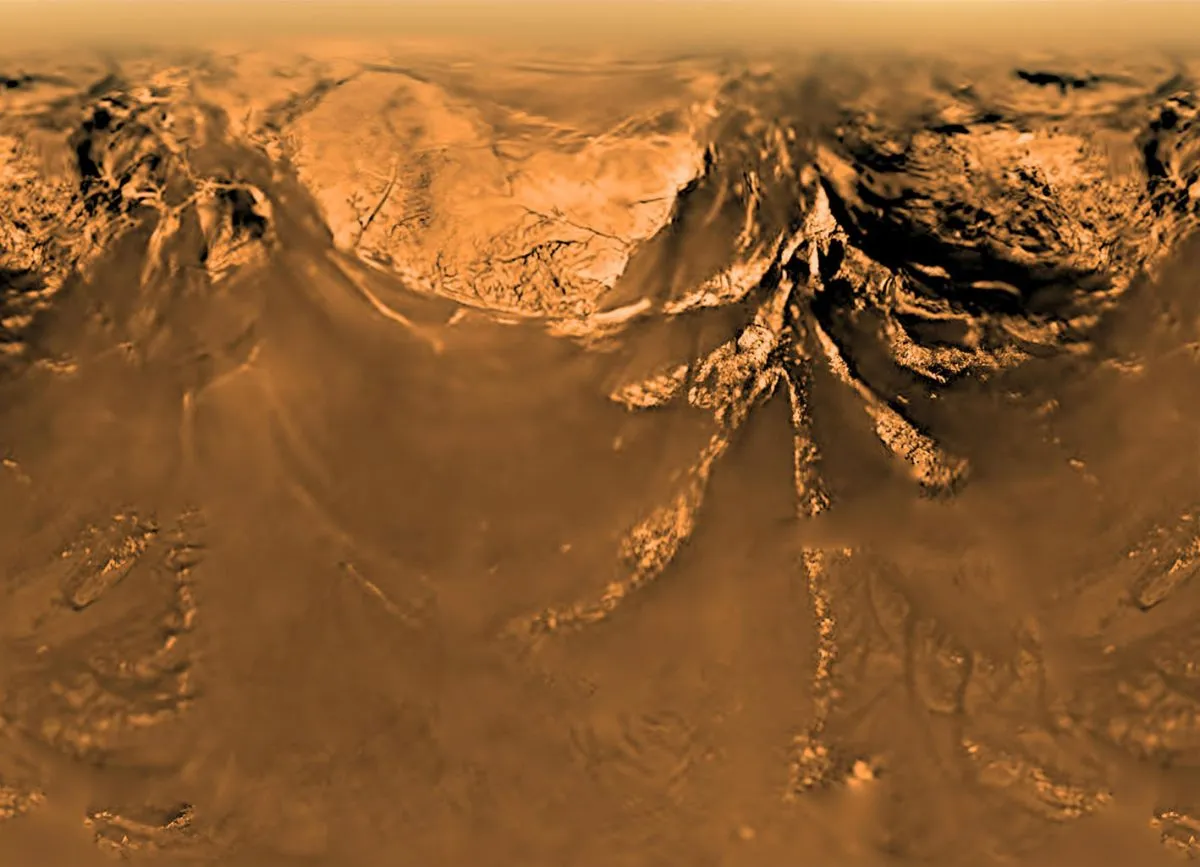What is Saturn like?
Like Jupiter, Saturn is a gas giant made almost entirely of hydrogen and helium but it has one feature that Jupiter doesn’t – a set of fabulous rings.
Saturn’s rings have captivated astronomers since they were first spotted in 1610.
They are made up of billions of fragments of ice, ranging from the size of a grain of sand to boulders several metres across, creating a disc spanning 250,000km from side to side, but which is only 1km thick.
Interactions with Saturn’s moons pulls this disc into a series of rings, as well as creating beautiful wave patterns, which were captured in spectacular detail by the Cassini space probe.
No one is sure how permanent the rings are – some studies suggest the rings are only few hundred million years old, while others suggest they could have been around for billions of years, making them as old as the planet itself.
Credit: Mark Garlick, from Story of the Solar System.
Saturn facts
- Diameter: 116,464km (9.14 times Earth), 250,000km including rings
- Mass: 568 trillion trillion kg (95 times Earth)
- Distance from the Sun: 1433.5 million km (9.58 AU)
- Length of day: 10.7 hours
- Length of year: 29.4 years
- Number of moons: 82
- Average temperature: -140ºC
- No of spacecraft visitors: 4
- Type of planet: Gas giant
How can I observe Saturn?
During opposition, Saturn is a moderately bright object, clearly visible to the naked eye.
Through binoculars you should be able to see the planet looks elongated, but to truly make out the rings you will need to use a telescope.
As the angle between Earth and Saturn changes with each passing year, the rings sometimes appear to us to be a flat line, while other times they look more like protruding ‘ears’, making Saturn a fascinating planet to return to year after year.
From where does Saturn get its name?
The Roman god Saturn was the god of agriculture and wealth, but his role was later combined with the Cronus, the Greek god of time.
It was from this last role that Saturn most likely got its name, as it is the slowest moving of the naked-eye planets in their journey across the night sky.
As Saturn was one of the Titans, most of the larger moons were named after his fellow mythological giants.
As better observing techniques discovered more moons, they were named after giants from other mythologies, including Inuit, Gallic and Norse.
How have we explored Saturn?

In 1979 and 1980, three missions flew past the planet, giving us our first glimpse of Saturn and its rings – Pioneer 11, Voyager 1 and Voyager 2.
The missions took advantage of an alignment of the outer planets that happens once every 175 years, allowing a single spacecraft to visit all four giant planets.
It would take almost 25 years for a spacecraft to get more than a fleeting glimpse of Saturn, when NASA’s Cassini probe arrived at the planet in 2004.
The spacecraft spent 13-years orbiting Saturn, looking not just at its rings, but its moons as well.
On 14 January 2005, Cassini dropped off the Huygens lander onto the planet’s largest moon, Titan.
The lander took several measurements of the moon’s thick nitrogen atmosphere before touching down on the icy surface.
Combined with Cassini measurements, the lander revealed that the moon was home to seas of methane and ethane.
In 2017, as the mission was nearing the end of its lifetime, the probe was sent on a series of ‘ring dives’ where Cassini flew between the planet and its rings, allowing astronomers to weigh the rings, as well as take a look at the environment in the region.
Cassini was crashed into Saturn on 15 September 2017 to protect its potentially habitable icy moons.
Explored by: Pioneer 11 (1979, NASA), Voyager1 (1980, NASA), Voyager 2 (1980, NASA), Cassini-Huygens (2004, NASA)
